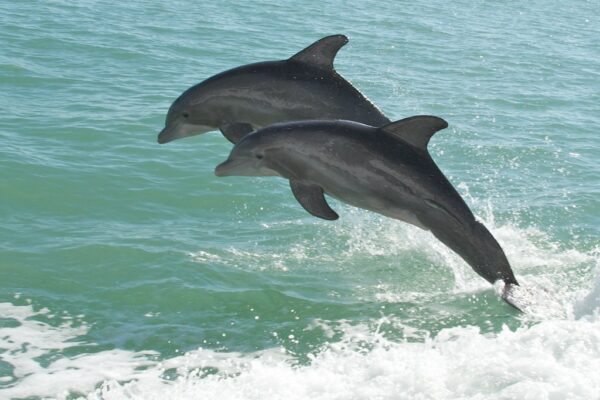Dolphins are one of the most beloved and iconic animals in the world. These fantastic creatures have captivated us with their intelligence, beauty, and playful nature. This comprehensive profile will explore the scientific name, physical traits, life span, habitat, diet, reproduction, conservation status, and interesting dolphin facts.
Scientific Name
The scientific name for dolphins is Delphinus delphis. This species belongs to the Cetacean family, which includes whales and porpoises. Dolphins are highly intelligent mammals that live in freshwater and saltwater habitats worldwide.
Physical Traits
Dolphins range from 6 to 13 feet long and weigh 1,500 pounds. Their streamlined body shape helps them swim quickly through the water. They have a distinctive curved dorsal fin on their back, which allows them to stay balanced while swimming. Dolphins also have a blowhole on top of their head to breathe air at the water’s surface.
Life Span
The average life span of a dolphin is 40-60 years in the wild. However, some species can live up to 80 years old! Dolphins are known to be very social creatures who form strong bonds with other members of their pod or family group.
Habitat
Dolphins can be found worldwide in saltwater and freshwater habitats, including oceans, rivers, lakes, and estuaries. They prefer warm climates, but some species can survive in colder waters. Dolphins often travel together in pods or family groups of up to 12 individuals, but larger pods of hundreds or even thousands can form during migrations or feeding frenzies!
Diet
Dolphins feed mainly on fish, but they also eat squid and crustaceans, such as shrimp and crabs, depending on what is available in their environment. Some species may also feed on small mammals such as seals or sea lions if they are present near shorelines or estuaries where dolphins hunt for food.
Reproduction
Dolphins reproduce sexually as most mammals do but do not mate for life as other animals do. Females give birth to one calf at a time after a gestation period of 10-12 months, depending on the species of dolphin involved. The young calves remain with their mothers until they reach maturity at around 4-6, when they leave to find mates and start new families!
Conservation Status
Many species of dolphins are listed as vulnerable or endangered due to human activities such as overfishing, pollution, boat strikes, and entanglement in fishing nets or lines used by humans for commercial fishing operations. Conservation efforts, such as protected areas for dolphins, have been put into place by governments worldwide. Still, more must be done if these incredible animals survive into future generations!
Interesting Facts
- Dolphins use echolocation (sonar) to detect objects underwater by sending sound waves that bounce off objects nearby so they can see what’s there without eyesight!
- Some dolphins can jump up to 20 feet from the water, while others may only jump 5 feet high!
- Dolphins communicate using clicks and whistles, which allow them to recognize each other even when separated by large distances!
- The Amazon river dolphin is pink due to its diet, mainly pink shrimp found only in this river system!
- The Franciscana dolphin is considered one of the most endangered cetaceans due to its small population, estimated at only 30 000 individuals worldwide!

